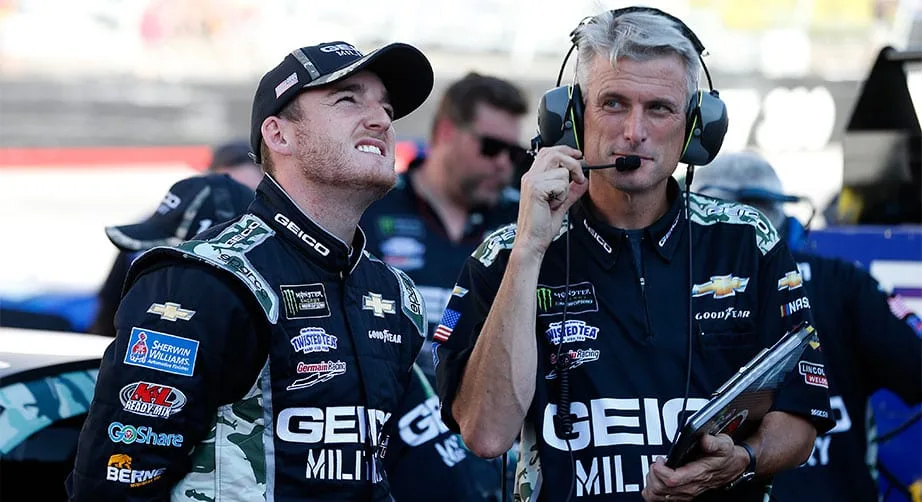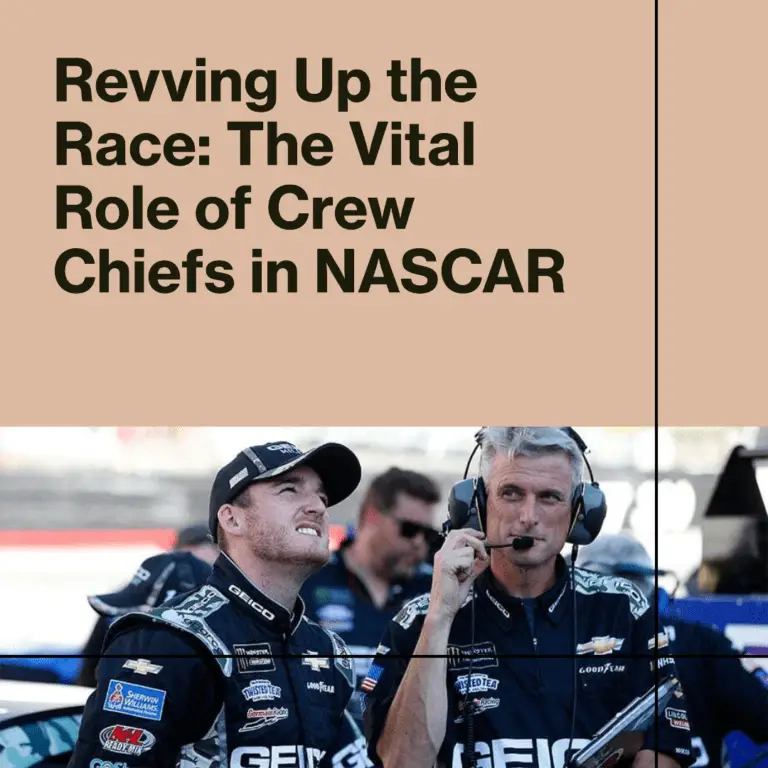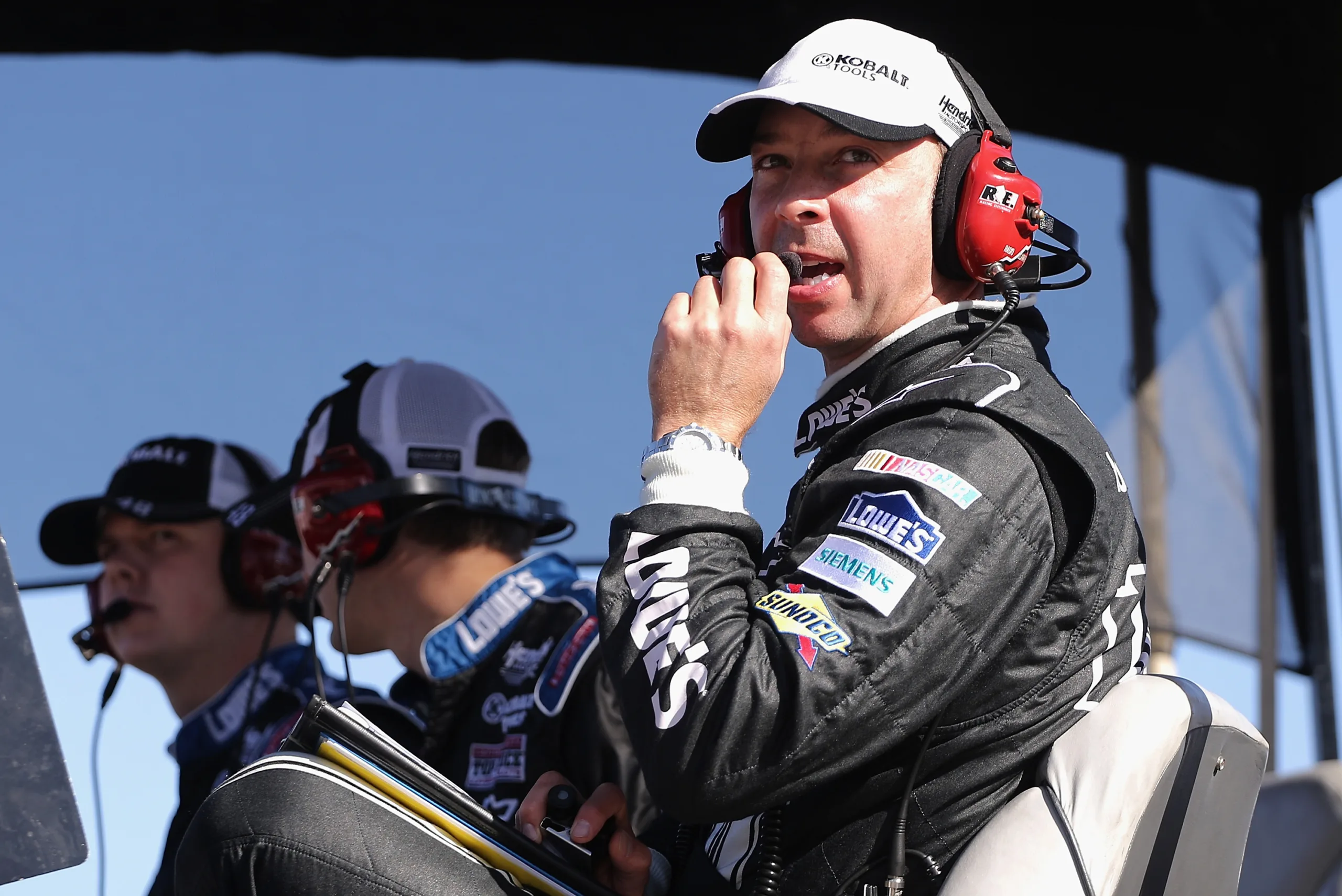The role of crew chiefs in NASCAR
Crew chiefs in NASCAR are one of the most important and influential members of the team behind every successful driver. They work hard to ensure the best performance and results in one of the most popular and competitive motorsports in the world, which attracts millions of fans and generates billions of dollars in revenue.
What is a crew chief and what do they do?
The responsibilities of a crew chief
Crew chiefs in NASCAR have many responsibilities that they perform before, during, and after a race. Some of these include:
- Designing and building the car according to the specifications and regulations of NASCAR
- Testing and tuning the car on various tracks and conditions
- Analyzing data and feedback from the car and the driver
- Making adjustments and repairs to the car as needed
- Planning and executing the race strategy, including fuel, tires, pit stops, and adjustments
- Communicating with the driver and the pit crew via radio
- Motivating and inspiring the driver and the team
- Dealing with any issues or problems that may arise during the race
- Reviewing and evaluating the performance and results after the race
The skills and qualifications of a crew chief
Crew chiefs in NASCAR need a combination of technical, managerial, and interpersonal skills to be effective in their role. Some of these skills are:
- A strong knowledge of NASCAR rules, regulations, and standards
- A high level of mechanical, engineering, and analytical skills
- A good understanding of aerodynamics, physics, mathematics, and statistics
- A keen eye for detail and accuracy
- A creative and innovative mindset
- A decisive and confident personality
- A calm and composed demeanor under pressure
- A good sense of judgment and intuition
- A clear and effective communication style
- A positive and motivational attitude

A crew chief also needs to have relevant experience and education in motorsports, preferably in NASCAR. Most crew chiefs start their careers as mechanics or engineers, working their way up through different positions in a team. Some crew chiefs also have a background as drivers or spotters, giving them an advantage in understanding the driver’s perspective.
How crew chiefs influence the performance and outcome of a race
A crew chief can make or break a race for a driver and a team. A chief of the crew has to make many decisions that can affect the speed, handling, safety, and reliability of the car. A crew chief also has to anticipate and react to changing factors such as weather, track conditions, competition, cautions, accidents, etc. A crew chief has to balance risk and reward, knowing when to be aggressive or conservative.
The importance of communication and strategy
One of the most crucial aspects of being a crew chief is communication. A crew chief has to communicate with the driver and the pit crew throughout the race, giving them information, instructions, feedback, encouragement, etc. A good communication can help improve the performance, confidence, morale, and trust among the team members.
For each race, the crew chief devises and executes a strategy. The strategy involves planning the number and timing of pit stops, the changes to the car during each stop, the amount of fuel to add or save, the type of tires to use or change, etc. The strategy also adapts to changing situations during the race. A good strategy can help the crew chief gain an advantage over other teams or overcome any disadvantages.
The challenges and risks of making decisions
Being a crew chief is not an easy job. It involves making many decisions that can have a significant impact on the outcome of the race. While some decisions rely on data and facts, others depend on intuition and gut feeling. Some of these decisions are made in advance, while others are made in the heat of the moment. Some of these decisions are clear and obvious, while others are complex and uncertain.
Making decisions as a crew chief can be challenging and risky, as there is no guarantee that they will work out as expected. A crew chief has to deal with the consequences of their decisions, whether they are positive or negative. A crew chief has to take responsibility for their actions, whether they are praised or criticized.

The rewards and recognition of being a successful crew chief
Despite the challenges and risks of being a crew chief, there are also many rewards and recognition for being a successful one. A crew chief can share the glory and satisfaction of winning a race or a championship with their driver and team. A chief of the crew can also earn respect and admiration from their peers and fans for their skills and achievements. A crew chief can also enjoy the thrill and excitement of being part of one of the most competitive and prestigious motorsports in the world.
How to become a crew chief in NASCAR
Becoming a crew chief in NASCAR is not an easy or quick process. It requires a lot of hard work, dedication, passion, and patience. It also requires a lot of education, training, experience, and networking. Here are some steps that can help aspiring crew chiefs pursue their dream:
The career path and progression of a crew chief
- Start by working as a mechanic or an engineer in a lower-level racing series, such as ARCA, K&N Pro Series, Camping World Truck Series, Xfinity Series, etc.
- Gain experience and knowledge by working on different aspects of the car, such as engine, chassis, suspension, body, etc.
- Learn from other crew chiefs by observing, asking questions, and getting feedback.
- Move up to higher-level racing series by applying for jobs or getting referrals from other teams or drivers.
- Work as an assistant crew chief or a car chief under a senior crew chief, taking on more responsibilities and tasks.
- Prove yourself by showing your skills, results, leadership, and potential.
- Get promoted to a crew chief position by impressing your team owner or driver.
The training and education required for a crew chief
- Get a high school diploma or equivalent, with good grades in math, science, physics, etc.
- Get a degree or certificate in automotive technology, mechanical engineering, motorsports engineering, or related fields from a college or university that offers programs in racing or NASCAR.
- Get additional training or certification in specialized areas such as aerodynamics, data analysis, simulation software, etc.
- Keep up to date with the latest trends and developments in NASCAR by reading books, magazines, websites, blogs, etc.
- Attend seminars, workshops, conferences, etc. that offer opportunities to learn from experts and network with other professionals.
The salary and benefits of a crew chief
- The salary of a crew chief in NASCAR varies depending on the level of experience, performance, team size, driver popularity, etc. According to some estimates, the average salary of a crew chief in NASCAR is around $200,000 per year, with some earning as much as $1 million per year.
- The benefits of a crew chief in NASCAR also vary depending on the team contract and agreement. Some benefits may include health insurance, retirement plan, bonuses, incentives, travel expenses, etc.

Conclusion
A crew chief is one of the most important and influential roles in NASCAR. A crew chief is responsible for overseeing all aspects of the car, the driver, and the pit crew. A chief of the crew has to make many decisions that can affect the performance and outcome of a race. A crew chief has to communicate with the driver and the pit crew throughout the race. A crew chief has to devise and execute a strategy for each race. A chief of the crew has to deal with the challenges and risks of their decisions. A crew chief can also enjoy the rewards and recognition of being successful.
Becoming a crew chief in NASCAR requires a lot of hard work, dedication, passion, and patience. It also requires a lot of education, training, experience, and networking. It is not an easy or quick process, but it can be rewarding and exciting for those who love racing and want to be part of one of the most competitive and prestigious motorsports in the world.

